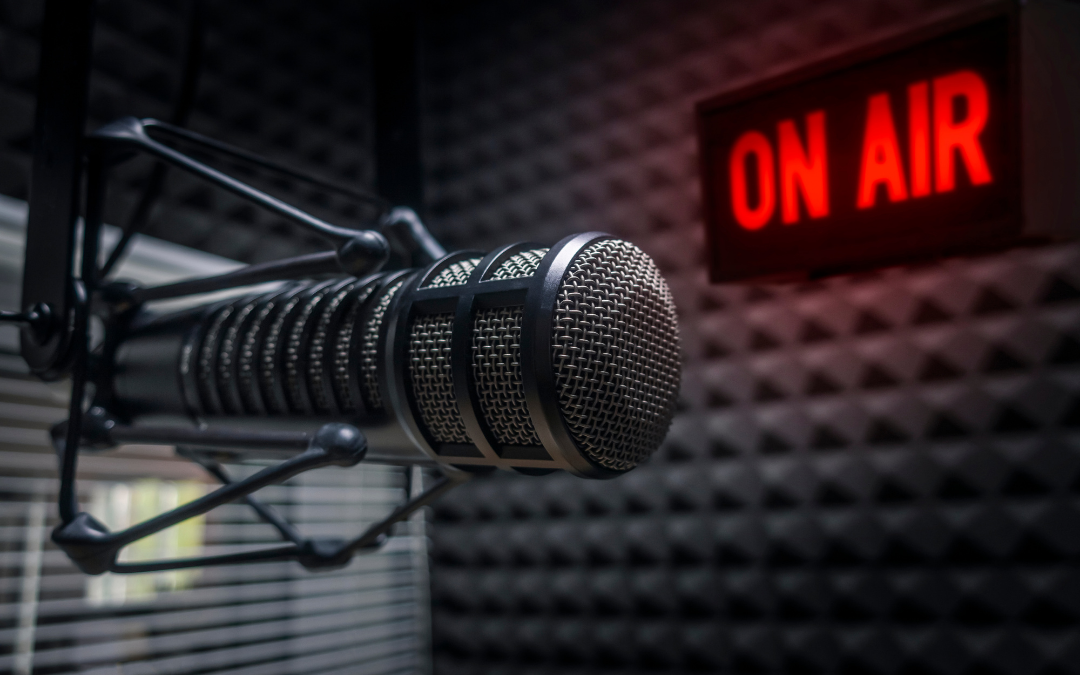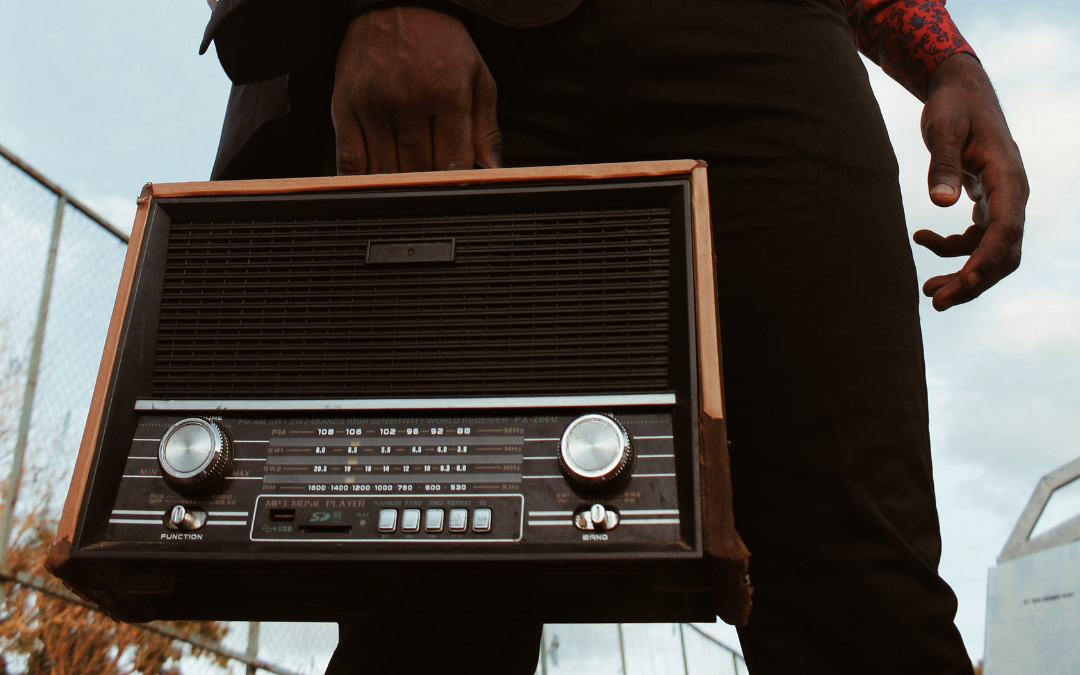Radio advertising remains a gold-standard channel for achieving brand recognition, and for getting products and services to market successfully. As a result, radio advertising expenditure has seen steady growth since 2015, with projections demonstrating a continued upward trend. As of August 2021 national commercial ad revenue was up nearly 17%. Steady growth indicates the level of confidence advertisers have in radio’s ability to reach and convert. This confidence is driven by radio’s robust performance and by successful radio advertising outcomes.
Radio advertising is a versatile medium that can spearhead a marketing and media strategy, can be the strategy, or serve as a critical tactic in a broader marketing blueprint. Crucially, radio advertising has a pricing structure that makes it accessible to the smallest of business ventures, and tightest of advertising budgets as well as those businesses and brands who have larger budgets and looking for scale and broad audience reach.
An Introduction to Radio Advertising
An advertiser needn’t have an in depth understanding of radio’s complexity and nuance. MediaSmiths provides comprehensive professional guidance allowing clients to focus on relating objectives while we translate ideas into strategies and tactics, and radio driven outcomes. In partnership with clients, we manage the mechanics, production, creative and logistics of getting commercials to air.
Our support begins from the first consultation where we discuss how radio best fits particular brands and objectives. We continue though to media buying, and all aspects of production, to results analysis. Advertisers fast become familiar with the channel via the collaborative process, however, understanding the core basics and terminology from the outset provides a valuable orientation.
Explained succinctly, radio advertising consists of advertisers purchasing radio airtime, usually referred to as a spot, to broadcast their message to a specific target market. While a simple and well understood concept, complexities emerge as advertisers consider the variety of ways in which they can package their message for broadcast.
Selecting a radio advertising format, or combinations of formats, is a strategic and tactical decision where both pragmatism and intuition inform the shape of a campaign. Scientific method, with its structured use of analytics, provides a dependable foundation on which to form an approach. However, there is an art to maximising radio’s advertising potential, and it’s creative insight that allows MediaSmiths to provide our clients with a radio advertising advantage.
The most utilised radio advertising formats include live reads, sponsorships, and produced spots. Each format has it’s specific tactical advantages and complexities which could be explained at length, but in simple terms, the three most common formats are defined as follows.
LIVE READ
A live read is when a broadcaster, often a public figure or famous radio broadcast personality, reads your message from a prepared script. This format is often used during talkback segments, where it has the benefit of reaching a highly engaged audience of which the demographics are especially predictable and consistent.
SPONSORSHIP
Sponsorship is when advertisers put their name/brand to a particular radio segment or program. You will often here is as, “This program is brought to you by…” There may be incentive based marketing tactics employed concurrently to increase engagement and action, such as dial-in competitions.
PRODUCED SPOT
The produced spot is by far the most frequently used format. It consists of a recorded, scripted advertisement, often with jingles and music, and vocal presentations performed by actors. These can be the most involved commercials to produce, as it often requires specialists skills across several professions. Nonetheless, from concept to broadcast, even the more complex commercials can be produced relatively quickly.
THE RIGHT STATION AT THE RIGHT TIME
Advertisers select radio stations based on the station’s reach to the advertisers target demographic. Targeting is refined further by selecting Dayparts (broadcast times) and specific radio programs based on the evidence of when their customers are most likely to be listening in the greatest numbers. The most common duration of a commercial is 30 seconds, and considered an industry standard. However, airtime can be purchased from 5 to 60 seconds, albeit at a higher relative cost.
Radio stations can be engaged directly by all members of the public wishing to advertise. While this approach might have some initial benefit in locations such as smaller country communities, engaging radio stations directly has limitations. MediaSmiths recommends discussing your objectives with us to so as to avoid common marketing and radio advertising speedhumps.
By engaging MediaSmiths you firstly ensure an approach that is integrated with your broader marketing objectives. But you will also benefit from our industry insight that will direct you to the best station mix, dayparts, and programs that are best suited for reaching your target demographic. Our well-established industry networks and status as a professional media buyer also affords advertisers more cost effective airtime. Radio advertising should only ever be used strategically, and always designed relative to specific branding, promotional or tactical objectives. This is best achieved in partnership with experienced marketing professionals.
Why Use Radio Advertising?
Radio delivers cost effective reach, immediacy, targeting and engagement. For these reasons, there’s likely to be a role for radio in your marketing strategy. MediaSmiths has the deeper industry insight that allows us to unpack radio’s nuance and complexities for our clients. They can more readily identify how radio will work for them as either a standalone strategy, or in concert with other advertising channels. Our adaptive approach ensures that together we can shape your brand’s message to capitalise on radio’s unique advertising characteristics.
Radio is the most affordable channel for penetrating the noise and reaching directly to a receptive customer with the repetition advertisements need to inspire action. Via the application of analytics, you can select a frequency (station), daypart, and segment in which your target is most engaged.
Research shows listeners engage because they’re nine times happier and more energised when tuned in to the radio. Two thirds of those tuned in are shown as open to advertising messages. An engaged listener is shown as more likely to initiate an immediate and strong response, with 78% of those who heard a radio ad initiating related digital activity within a day. Research has found that radio listeners are six times more likely to visit the website of an advertiser they heard on radio.
Always Competitive, Relevant, and Innovative
The “golden age” of commercial radio spanned the 1920’s to the 1950’s. It was the premier, source of broadcast media, which was not just entertainment and the community notice board but the pinnacle of advertising. Understandably, the advent of television was a revelation that would radically change the advertising landscape.
Such was (and is) the pervasiveness of television with its visual attraction, it is remarkable that radio endured the newness of an superior medium, always remaining relevant. Resilience and continuity has been a through-line in radio, and it remains today. Video didn’t kill the radio star, and nor has the internet. On the contrary, radio’s continued innovation has provided fertile opportunities for radio advertisers, as it continued to relate to its listeners, growing it’s base over generations.
Radio didn’t have to reinvent itself to compete, it simply had to adapt current technologies. Live radio, or linear radio, has integrated streaming, podcast, and catch-up services while retaining the characteristics listeners are traditionally drawn to. This has ensured it remains competitive with online and television advertising, without compromising its historic identity. More than just staying relevant, radio is thriving by hedging its linear staple with more tailored options for consumers to access radio content. While in 2020, majority of people listened to radio via the traditional terrestrial format, 27% of people listened to a digital audio broadcast via a device. Research indicates that this is the second most popular platform for listening to AM and FM radio. This figure demonstrates that a diversity of radio/audio options has secured a strong listener foothold.
Measuring Reach Potential
A 2020 GFK radio ratings survey found that all age demographics have experienced growth over the last 5 years. Interestingly, this coincides with a steady growth of advertising expenditure over the same period. From ages 10 to 64, commercial metro radio reached a minimum of 75% of the population, with only the 65+ demographic coming in with a lower, yet still a high, 67%. These are impressive numbers, but how are they measured?
Radio is measured in much the same way as public political sentiment. Researchers use written and electronic means to survey a selected pool of listeners from various demographics, who are deemed representative of the broader listenership. This is a traditional method on which the industry has relied for decades. However, both proponents and critics of the method are innovating radio measurement to plug the accuracy deficits inherent in the traditional system.
Australian commercial radio has conceived a program that uses specially adapted smart watches to gather more accurate listenership data. The immediacy and accuracy of feedback is envisaged to open new possibilities for radio advertising efficacy. While clearly more advanced than current methods, such technologies methods would be used to enhance traditional measurement methods, not replace them. Traditional measurement tools are continually being refined.
While well-resourced metro radio funds high tech measurement ventures, regional radio has developed cutting edge analytics that have historically only been available for metro stations. Industry body Commercial Radio Australia recently (2019) developed sophisticated data analysis tools designed to increase advertising efficacy in regional radio. The new tool “…allows for agencies to calculate optimal reach and frequency combinations for their advertising campaigns.”
This data, which draws on consumer behaviour insights, ensures radio stations can present more relevant demographic information to advertisers which, for example, can reveal “how increasing spend might increase reach” and “the most effective budget allocations by daypart (time of day you advertise).” These advances in measuring radio allows advertisers to make more informed and strategic advertising decisions.
Growth, innovation, and more refined analytics are delivering advertisers a larger, more accessible market, along with the critical demographic insights required to maximise advertising returns.
The Cost and Flexibility of Radio Advertising in Australia
This is a very common question, and the most immediate and accurate answer it can vary significantly. A thirty second produced will incur an estimated cost as little as $50 on a regional station, and as much as $500 on a popular metro station. It’s important to note, that these figures are indicative only and pertain to basic airtime. Costs and are impacted by the scope of campaign and other external factors.
Key factors to consider are ad production and marketing costs. Production includes voice talent, musical talent, studio fees and writer fees. A further variable is daypart. Cost will vary significantly depending on the time of day your advertisement is aired. When partnering with MediaSmiths for a radio campaign, clients receive the financial benefits of our strong industry relationships, and media buyer costs advantage.
A consultation with MediaSmiths will give you very accurate cost structures for getting a radio commercial to air. More importantly, we will demonstrate how you can get the greatest return on your radio investment, regardless of whether your budget is modest or millions
It’s critical to note that research has shown there is always a positive return on radio advertising ranging from 1% to 64% on average. Further to this, lead times for production can be less than a week. Advertisers can change spots and stations easily and with little cost. This allows advertisers the flexibility to refocus and speculate.
The Future of Radio Advertising
Comparing total radio advertising expenditure over the last six years suggests strong confidence in the channel. Better still, projections to 2024 and beyond mirror this steady growth, suggesting the buoyancy will remain.
When you add consistency to resilience, radio is revealed as an advertising channel that invites confidence in investment over the longer term. Looking back to the comprehensive advertising study by Colmar Brunton in 2015, radio advertising alone delivered an average return on investment (ROI) greater than 17%, outperforming web and TV by 3% and 4% respectively. When radio advertising was used in concert with online advertising, the average ROI increases to better than 23%. Given continued growth from 2015 and projected growth to 2024, radio’s resilience and consistency, hence reliability, appears salient.
As media planners and buyers with strong industry partnerships and a proven record, we have intimate knowledge of the radio advertising process and its sophisticated measuring systems. We simplify the process for our clients, allowing them to identify clear radio-based pathways directly to their customers. We invite businesses of all types and sizes to schedule a consultation with MediaSmiths to learn more about the benefits of radio advertising.
Source:
- http://www.radioalive.com.au/Why-Use-Radio#_ftnref10
- https://www.mediaweek.com.au/colmar-brunton-releases-results-of-landmark-study-measuring-media-spend-roi/
- https://www.slideshare.net/brenhartnoll/colmar-brunton-roistudyslides
- http://www.commercialradio.com.au/content/mediareleases/2021/2021-09-20-commercial-radio-ad-revenue-up-16-8-in#.YWfayhpBxPY
- https://www.radioresults.com.au/radio-advertising-costs/
- https://www.yesmarketing.com.au/media-students1.html
- http://www.radioalive.com.au/RA/media/General/Documents/2020-ListeningSummary.pdf
- http://www.commercialradio.com.au/content/mediareleases/2019/2019-07-17-new-service-for-regional-radio-advertis#.YWfRrBpBxPY
- http://www.commercialradio.com.au/content/mediareleases/2021/2021-09-20-commercial-radio-ad-revenue-up-16-8-in#.YWfTexpBxPY
- https://www.ibisworld.com/au/industry/radio-broadcasting/638/
- https://www.pwc.com.au/industry/entertainment-and-media-trends-analysis/outlook/radio.html
- https://www.statista.com/statistics/958890/australia-radio-advertising-value/






